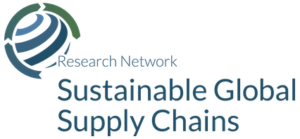World Development Report 2020: Trading for Development in the Age of Global Value Chains
World Bank
2019
DOI number#Agriculture and food
#Trade and FDI
#Manufacturing
#Sub-saharan Africa
#Mining
#East Asia and Pacific
#South Asia
#Environment and climate change
#The Middle East and North Africa
#EU / Western Europe
#Social and working conditions
#Energy
#Corporate responsibility and lead firms
#Latin America
Global value chains (GVCs) powered the surge of international trade after 1990 and now account for almost half of all trade. This shift enabled an unprecedented economic convergence: poor countries grew rapidly and began to catch up with richer countries. Since the 2008 global financial crisis, however, the growth of trade has been sluggish and the expansion of GVCs has stalled. Meanwhile, serious threats have emerged to the model of trade-led growth. New technologies could draw production closer to the consumer and reduce the demand for labor. And conflicts among large countries could lead to a retrenchment or a segmentation of GVCs. The World Development Report (WDR) 2020: Trading for Development in the Age of Global Value Chains examines whether there is still a path to development through GVCs and trade. It concludes that technological change is at this stage more a boon than a curse. GVCs can continue to boost growth, create better jobs, and reduce poverty provided that developing countries implement deeper reforms to promote GVC participation, industrial countries pursue open, predictable policies, and all countries revive multilateral cooperation.



